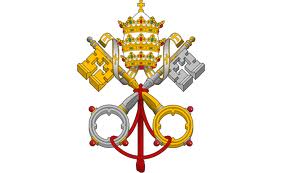 That’s the proposition advanced by conservative pundit Mary Eberstadt in her contribution to the Wall Street Journal‘s roundup of what-to look-for-in-a-new-pope essays. I have my doubts.
That’s the proposition advanced by conservative pundit Mary Eberstadt in her contribution to the Wall Street Journal‘s roundup of what-to look-for-in-a-new-pope essays. I have my doubts.
Here’s the nub of Eberstadt’s argument.
Christianity Lite has been tried repeatedly during the past few decades, and for Catholics and Protestants alike, the result has been graying pews, falling attendance, indifferent practice and children from “Christian” homes who do not know Easter from the Easter bunny.
Eberstadt believes it’s gospel that “Christianity Lite” weakens the family.
As the empirical record shows, where the family is strong, so are Christian communities and doctrine—and vice versa. For both Protestants and Catholics, it is orthodoxy, not heterodoxy, that galvanizes the faithful, mints new recruits and succeeds, literally, in reproducing itself.
I’m not sure what empirical record she has in mind, but the data I’m aware of hardly suggests as much. Take the Southern Baptist Convention. Its take-over by conservatives in the late 1970s didn’t change its membership trajectory at all and now, after a generation of doctrinal orthodoxy, it finds itself on a downward slide. As the SBC’s demographer-in-chief puts it, “Based on the trend of annual percent change in SBC total membership, we are catching up with the Methodists, and will match their decline rate consistently by 2018.”
Then there are the Catholics themselves. According to our ARIS surveys, those born in the immediate wake of Vatican II–the Gen-Xers who grew up during the heyday of Eberstadtian Catholicism Lite–remained highly connected to the faith. Indeed, fully 33 percent of all Gen-Xers in America identified as Catholics in 1990. But during the next two decades of doctrinal tightening-up, they fell away, such that now just 26 percent of the cohort consider themselves Catholic–23 percent, if you don’t count Latino immigrants.
Moreover, there’s no correlation between the degree of religious commitment in a given state and its marriage and divorce rates.
In short, Eberstadt’s nexus of orthodoxy (whatever that exactly means), strong families, and denominational reproduction does not exist. There are more factors at work here than are dreamt of in her philosophy.





